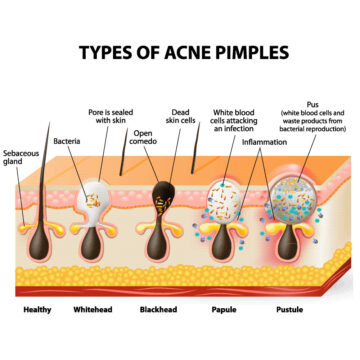Papule Acne Edmonton: Formation and Treatment Options
Papule acne Edmonton is more than just a temporary skin issue—it’s a form of inflammatory acne that can disrupt your confidence and lead to long-term scarring if not addressed correctly. At Albany Cosmetic and Laser Centre in Edmonton, we offer personalized and science-backed solutions to effectively manage and treat this type of acne.
These small, red, raised bumps may appear without any visible pus, but they often feel sore and can trigger further irritation. Our expert team utilizes advanced skincare technologies and medical insight to clear existing breakouts and prevent future ones—restoring your skin’s natural glow.
How Our Papule Acne Edmonton Treatments Work: Evidence-Based Medicine
Benzoyl Peroxide (2.5–10%)
Antibacterial, anti-inflammatory, and exfoliating. Effective in reducing papules, especially at lower concentrations. Found in gels, creams, and cleansers.
Salicylic Acid (0.5–2%)
Penetrates pores to exfoliate and reduce inflammation. Ideal for mild to moderate papular acne when paired with Hydrafacial . Commonly used in chemical peels.
Blue Light Therapy (405–420 nm)
Targets acne-causing bacteria. Backed by clinical studies for treating inflammatory acne.
Photodynamic Therapy (PDT): Combines a topical photosensitizer with blue light to reduce oil and bacteria. Effective for moderate to severe papular acne; performed in clinic.
Topical Niacinamide (4%): Anti-inflammatory and oil-regulating. Comparable to topical antibiotics for papular acne. Supports tone correction and pairs well with microneedling.
Proper Skincare Routine: Use non-comedogenic, low-pH cleansers and avoid physical exfoliants. Gentle chemical exfoliants enhance skin renewal and support results.
Lifestyle Adjustments: Adopt a low glycemic index diet to manage oil production. Consider limiting dairy—especially skim milk—in resistant acne cases. Complements treatments like PRP and Fraxel laser.
For more comprehensive guide about all treatments, please visit our acne treatment page.
Understanding Papule Acne Edmonton – The Root Causes


Papule acne forms when pores become blocked with oil and dead skin cells, leading to inflammation without visible pus. Common triggers include hormonal changes, high stress, excess sebum production, poor diet, and inconsistent skincare. Left untreated, it can evolve into more severe acne types or lead to permanent skin texture changes. Papule acne is caused by a combination of factors, including:
- Hormonal changes
- Excess oil production
- Bacterial overgrowth
- Clogged pores
Frequently Asked Questions
What are papules and how do they differ from other acne types?
Papule acne Edmonton are small, red, inflamed bumps on the skin that do not contain pus. Unlike pustules or whiteheads, papules are tender to the touch and form when pores become clogged and inflamed, but not infected with pus.
Are papules a sign of severe acne?
Papules are a form of inflammatory acne, often classified as moderate. While not as severe as cysts or nodules, they can still cause skin damage and scarring if untreated or improperly managed.
Can papule acne go away on its own?
Mild papules may resolve without treatment, but persistent or widespread papules typically require a targeted skincare routine or medical-grade treatments to avoid scarring and recurrence.
What treatments work best for papule acne Edmonton?
Effective treatments include benzoyl peroxide, salicylic acid, blue light therapy, chemical peels, and photodynamic therapy. Our specialists personalize care based on your skin type and acne severity.
Can I pop a papule Acne Edmonton to get rid of it?
No. Papules contain no pus to extract and popping them can worsen inflammation, cause infection, and lead to long-term scarring. Always follow professional advice for treatment.